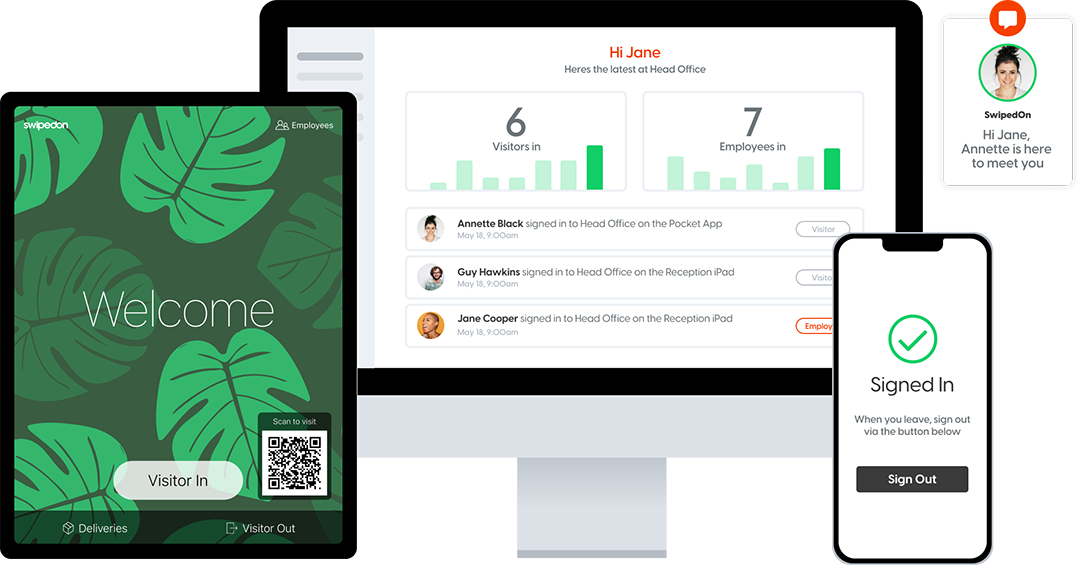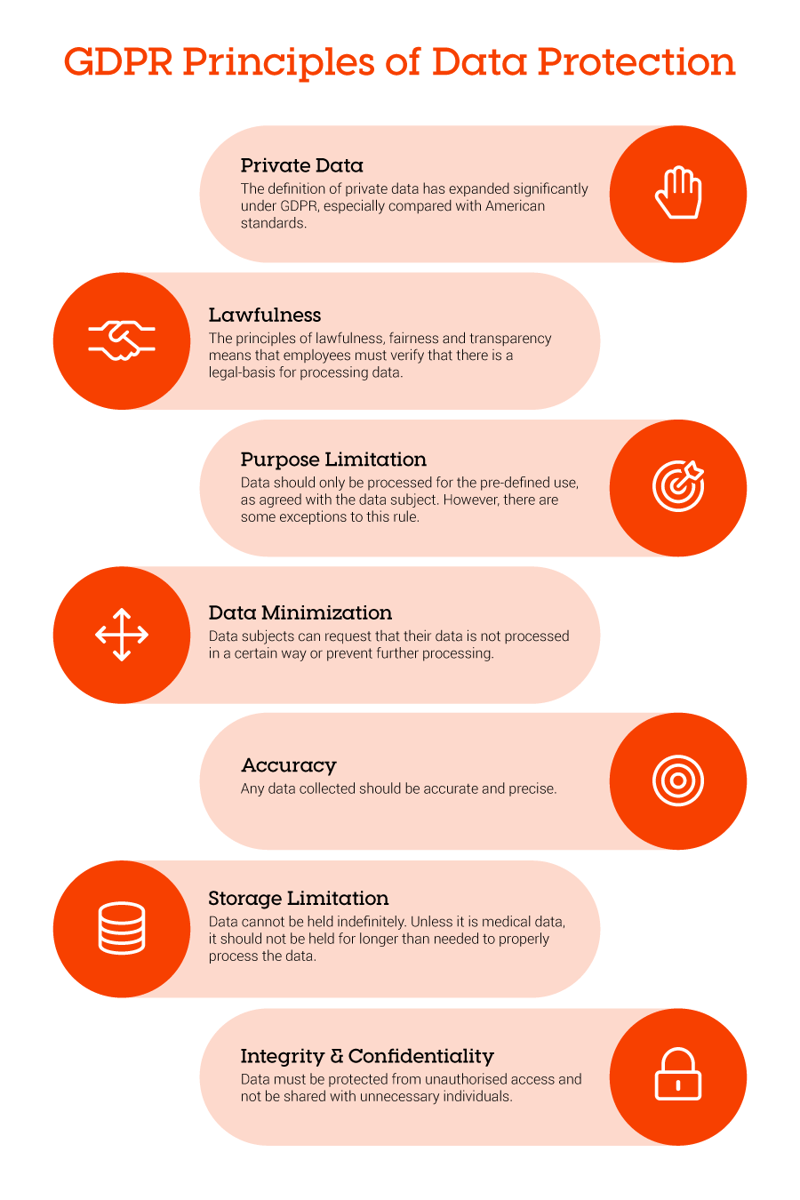Create a Visitor Management System in 5 Easy Steps

Everyone who visits your office, whether they’re a client, customer, supplier, business partner, or even a regulatory authority, goes through your reception area.
Their first impression of your company sets the tone for productive meetings, fruitful partnerships, and stronger business relationships.
It also gives a sense of your company culture and values. This is why it’s important to create a smooth visitor sign-in experience while demonstrating your company’s attention to detail and professionalism.
In this post we'll run through how you can create a visitor management system in 5 easy steps.
1. Categorize Your Office Visitors
Start with a list of visitor types that your office receives. Visitors can be grouped into different categories depending on the purpose of their visit. Some of the most common visitor categories are:
- Delivery personnel
- Clients
- Business partners
- Authorities (i.e. inspectors, government representatives, etc.)
- Service providers and suppliers
Your front desk team or receptionist can provide additional information to your visitors based on the purpose of their visit. This includes safety and security requirements, data confidentiality agreements, and specific instructions based on the areas of your office they will be visiting.This information can also be printed on their ID badge.

2. Explain How Personal Data Will Be Used
There’s no better way to preface this section than with a quick review of the six principles of the GDPR, an EU regulation for data protection and privacy applying to all companies doing business there. The GDPR can also act as a guide for best practices in data privacy and protection for companies outside of the EU, as shown in the below infographic, which outlines six GDPR principles of data protection:
Let’s take a look at one of these six principles: purpose limitation. According to GDPR rules: “Personal data shall be collected for specified, explicit and legitimate purposes and not further processed in a manner that is incompatible with those purposes.”
In short, you cannot collect visitor information just because you want to. There must be clearly outlined reasons. Common purposes for data collection include:
- Physical security procedures
- Data security procedures
- Health and safety procedures
These reasons should be clearly explained to your visitors and they need to give consent that they’re allowing you to process their personal data for these purposes. Using a feature-rich visitor system instead of a traditional paper form can help make this easier. It can also make getting consent more convenient.
3. Communicate How You Will Keep Personal Information Secure
You can’t blame your visitors if they are hesitant to give you their personal information. Personal data is a highly-priced target among hackers and the personal information you collect from your visitors is no exception. An ideal visitor sign-in flow shouldn’t leave your visitors feeling nervous about whether the personal data they shared with you is secure. It falls on your shoulders to make your visitors feel assured that whatever information they share with you will be kept private and protected.
Securing your visitors’ personal data well ultimately depends on the quality of the visitor management software you use. An outdated legacy system, or a system without proper encryption standards, leaves data vulnerable to hackers. Meanwhile, a paper visitor logbook can easily be stolen. Anyone signing in can easily memorize the contact details of another visitor.
A secure visitor check in system is safe against hackers as well as being “voyeurism safe.” Visitors only see the information they’re supposed to see. Personal data is encrypted and stored in secured servers and data can be easily searched by those with access, or deleted as needed. In short, using an up to date sign in system and communicating how it works, can make your visitors feel that you take the protection of their personal data seriously.
4. Have a Clear Visitor Policy
“But I wasn’t informed about that.”
This is one thing you don’t want your visitors telling you when something goes awry during their stay at your office. Not informing visitors about what they can and can’t do while in your office increases your liability if and when incidents such as accidents, security breaches, theft, or fire happen.
A carefully thought out visitor policy is essential for all businesses, regardless of industry or size. For instance, petroleum company Shell has an HSSE policy which stands for Health, Security, Safety, and the Environment. Before starting every meeting, the person who is running that meeting is responsible for informing visitors about important visitor protocols such as fire exit locations, evacuation assembly areas, food safety (if food is served in the meeting), etc.
A solid visitor policy should include the following:
- A list of restricted areas that your visitors cannot access
- Any environment-related policies such as proper garbage/waste disposal
- Evacuation procedures in case of an emergency
- Food safety policies
- Rules on taping, recording, and device use
- Any non-disclosure and confidentiality rules you have
At the end of the day, giving visitors clear guidelines on how to conduct themselves while in your office during sign-in makes them feel safer and communicates that you care about their wellbeing.
5. Pre-Register Visitors
Making your visitors feel like they are VIPs goes a long way in making a positive first impression. Pre-registering visitors is a simple yet effective way to do this.
A centralized visitor management app allows your employees to pre-register their visitors once they finalize the date and schedule of their meeting or appointment. Pre-registered visitors who arrive at your office just need to approach the front desk and give their name and your reception staff will know who they are and who they’re visiting.
The whole experience gives a more professional first impression and your visitors feel that they are well taken care of. It also creates a more hospitable and welcoming atmosphere since your guests will feel that you’ve taken the extra step to prepare for their arrival.
A Good Visitor Sign-in Experience is Good for Business
In business, making a lasting impression is not just superficial. It’s essential to building strong partnerships.
Creating a positive sign-in experience for your visitors is much easier with the right tools and technology. A visitor management system facilitates faster processing and makes the entire sign-in flow and subsequent visit more efficient, safe, and secure. If you want to get a preview of how a digital visitor management system can transform your sign-in flow, take SwipedOn for a 14-day free spin.




-929560-edited-003563-edited.jpg)





 Germany - Deutsch
Germany - Deutsch